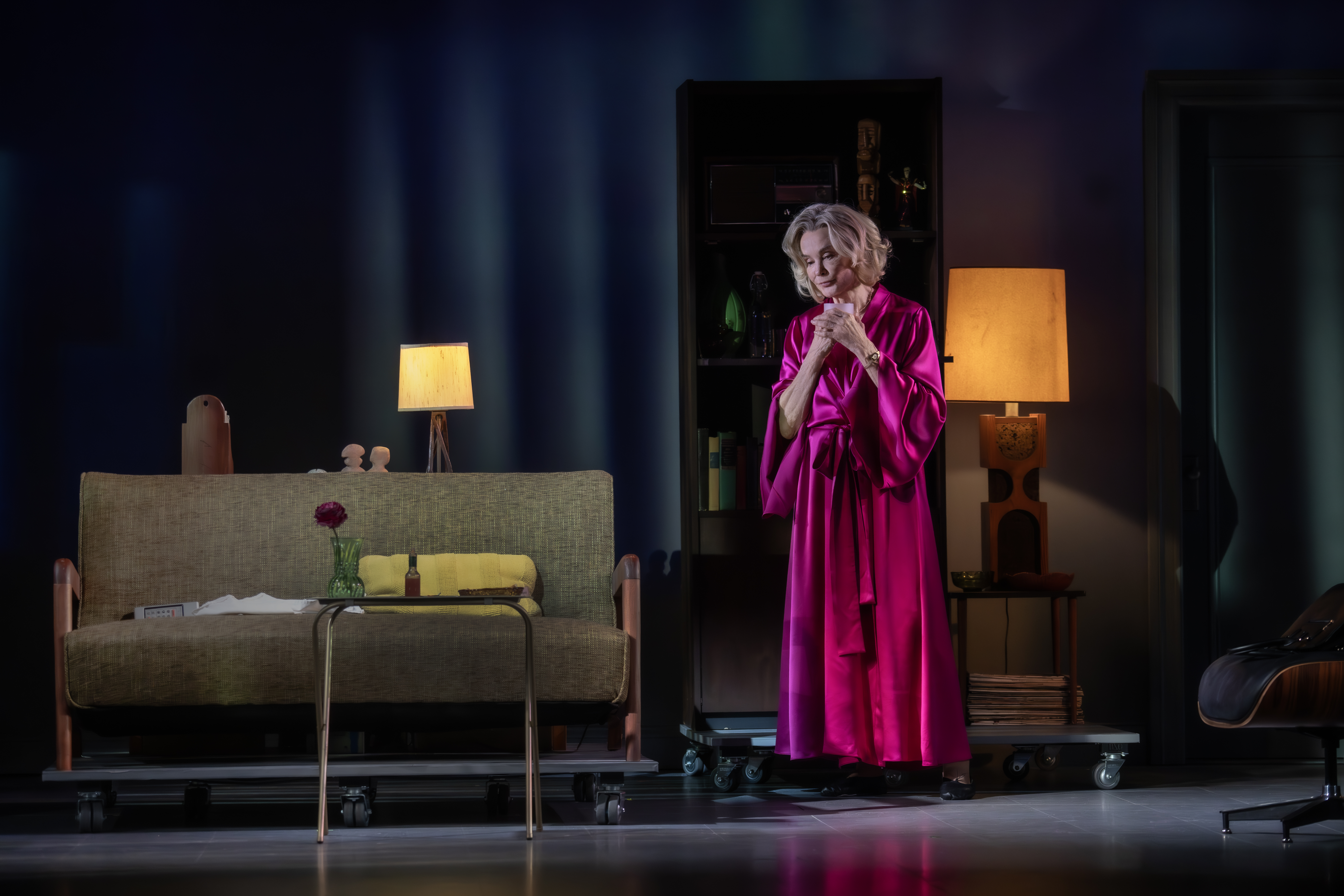The Emperor Jones

in The Emperor Jones
(© Carol Rosegg)
A glance at the script for Eugene O’Neill’s ground-breaking 1920 tragedy, The Emperor Jones, now getting a remarkably cogent revival at the Irish Repertory Theater, can lead one to wonder how to tackle this problematic work in today’s lingering atmosphere of political correctness.
The trick is handling the play’s depiction of a murderous New York black man who’s conned his way to the ruling position on an unspecified West Indies island, which seems irredeemably dated. Brutus Jones speaks in pidgin English and says things like “Feet, do yo’ duty” and “Who dat?” and O’Neill even has a stage direction that Jones “shuffles” — a buzzword for racial bias if ever there was one.
Well, director Ciaran O’Reilly has found at least one astonishing way to overcome these obstacles and restore The Emperor Jones to a blood-chilling, bone-rattling work of theater, by transforming the Irish Rep’s stage into an eerie fantasy land. Furthermore, he’s cast the monumental John Douglas Thompson, a memorable Moor in the Theatre for a New Audience’s Othello production last season, who does an equally fearless, ennobling job now as Jones.
After only two years among the islanders, Jones had been glorified by them. They have suddenly fled, however, into the lush jungles to escape the repression the ruthless emperor has imposed. Left with only his hateful and hating white gofer, Henry Smithers (Rick Foucheux), to fawn on him, Jones decides it’s time to forge through the jungle himself to retrieve the pile of cash he’s accumulated and stored elsewhere. What he doesn’t anticipate is that guilt — as symbolized by the pounding of drums and by the vengeful natives he thinks await him along his path — will inexorably overcome him. To depict Jones’ increasingly debilitating flight, Thompson applies his imposing physique and sonorous voice to a figure, assailed by growing fears. As he does, he inspires the kind of theatrical awe that playwrights since the Greeks have sought.
Meanwhile, O’Reilly has retained Bob Flanagan to supply masks as well as puppets to terrify the fleeing Jones. Set designer Charlie Corcoran has hung an eerie jungle of corded curtains. Costume designer Antonia Ford-Roberts has built tree-stump outfits for supporting actors Michael Akil Davis, Jon Deliz, Sameerah Harris, David Heron, and Sinclair Mitchell to wear menacingly, while Ryan Rumery and Christian Frederickson have devised drum beats that suggest trembling heartbeats.
Still, it may be that despite O’Reilly’s treatment, there will be audience members who can’t get past what seems a racist attack, and many theatergoers may recoil at the repeated use of the epithet “nigger.” But O’Neill once wrote that “the playwright today must dig at the roots of the sickness of today as he feels it,” and it’s undeniable that the societal sickness the playwright felt 90 years ago hasn’t been cured. For those who see the play in that light, The Emperor Jones transcends race and becomes a universal indictment of the abuse of power.










